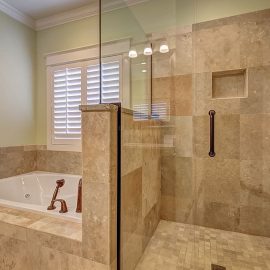Central heating circulation pumps can consume a lot of energy if you are not careful. But its hunger can be satisfied with just a few tricks!
It works quietly and unnoticed, which is why the average consumer isn’t familiar to it: we are talking about the central heating circulation pump. In fact, it consumes a lot of electricity. For instance, it accounts for 5-10% of the average household’s electricity bill. Fortunately, it is possible to limit this consumption.
Current Consumers
The job of the circulation pump is to circulate water from the boiler to the radiators (or convectors). Older heating systems were equipped with a standard circulation pump, which had to run at the same speed (70-80 W capacity) throughout the heating season. A simple calculation yields an annual energy consumption of ±450 kWh, which is more than the energy consumption of modern washing machines and dishwashers.
Modern systems typically have a three-speed circulation pump (25-75 W). In continuous operation, they consume 150-300 kWh annually (when used for 6,000 hours). Therefore, this type of pump consumes much less power.
Since 2005, high-efficiency pumps have been used in central heating systems in private homes. From a technical point of view, low power consumption is achieved by new motors with permanent magnets and electronic speed control. These devices are classified by their respective manufacturers, inspired by the more familiar energy labeling system. Most circulators sold today are classified as Class A, B, C, or D. The class is indicated on the packaging, instruction manual, or sticker.
What Are the Advantages?
Members of the German consumer organization Stiftung Warentest conducted a comparative test of high-efficiency circulator pumps. On average, a Class A pump in a heating system would consume between 52 (4,000 hours) and 78 (6,000 hours) kWh per year. Under the same conditions, Class B would be 109-163 kWh per year and Class C would be 160-240 kWh per year.
If the circulation pump needs to be replaced, ask the installer to install a high-efficiency pump; expect to pay about 180 euros for Class B and 300-350 euros for Class A. The amortization period (7-17 years) is quite long, but this type of equipment also has a long life span. By the way, there is no need to sacrifice comfort with this saving. On the contrary, a high-efficiency pump will reduce the likelihood of noise coming from the pipes and radiators.
Do What Is Best for the Earth and Your Finances
Circulation pumps have a very long lifespan and usually only need to be replaced once every 15 to 20 years. But even if you already have a circulation pump in place, you can often easily save money, at least with a standard model with a three-position speed control. Make sure the pump is on the lowest setting. If not, check to see if hot water is being delivered to all radiators at the lowest setting; you can expect a reduction in power consumption of 55W (setting 2) to 35W (setting 1). For a heating time of 4,000 hours, this translates to a savings of 80 kWh.
What Should I Consider When Purchasing a Circulation Pump?
Circulation Pump Efficiency
Circulation pumps are a large energy consumer, but energy consumption can be reduced by selecting a high-efficiency circulation pump.
Installation and Passage Dimensions of Circulation Pumps
When purchasing a new circulation pump, it is essential to compare installation and passage dimensions. The installation dimensions indicate the pump’s length, typically 130 mm or 180 mm. It is easiest to choose one the same size as the old pump. Orifice size is the nominal diameter of the connection between the inlet and outlet. It is the diameter through which water passes.
Circulating Pump Head
The head is the pump’s lifting height. Using at least one pump with the same head as the pump currently in use is always recommended.
Let us know if these few tips have helped you in the comments below!



